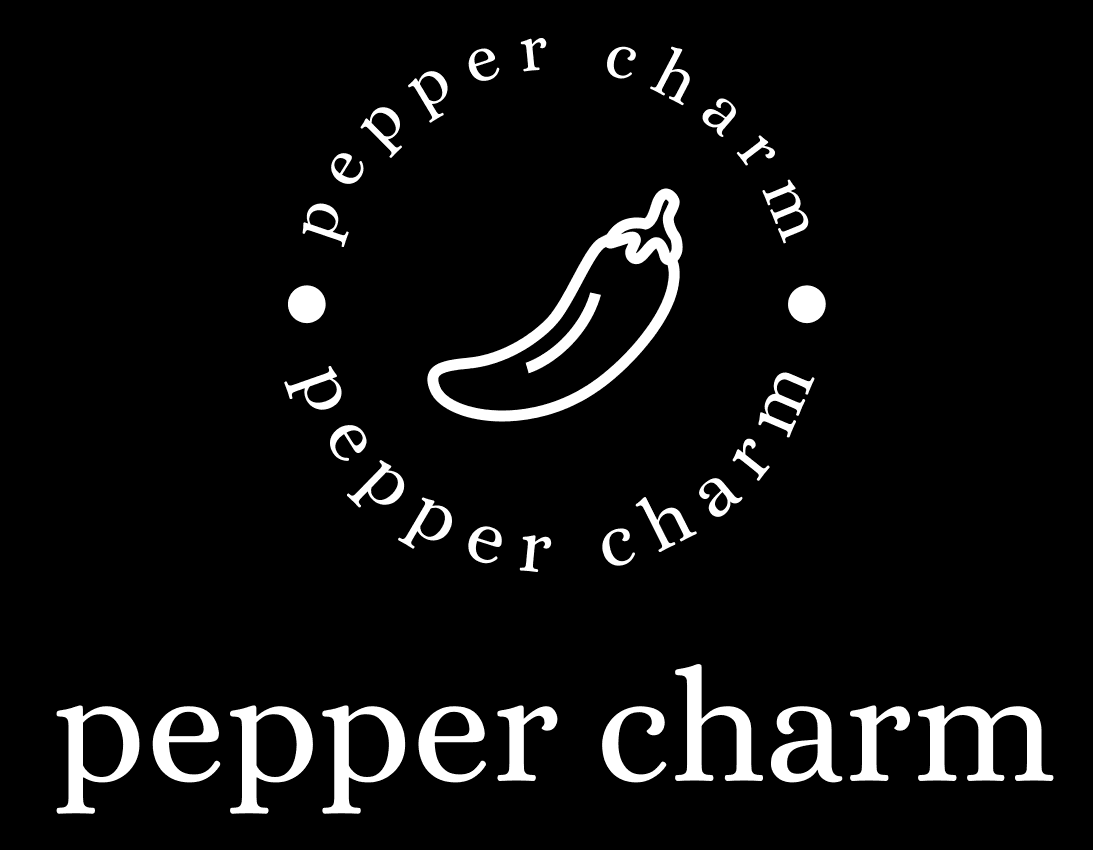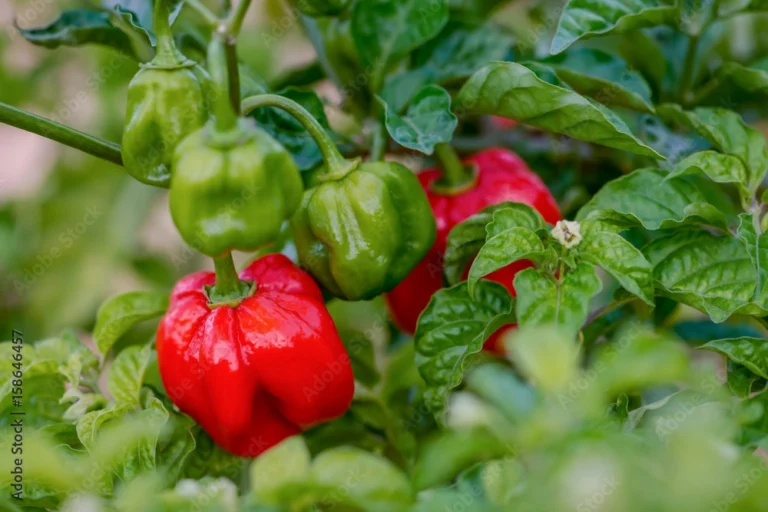Ghost Pepper: Heat, Flavor, and Uses
Introduction
Ghost Pepper, often called Bhut Jolokia, has captivated spice lovers worldwide due to its intense heat and intriguing flavor profile. Known for its mindblowing spiciness, the Ghost has become a cultural phenomenon for those who love a fiery culinary challenge. But the Ghost is more than just about heat – it offers a complex and slightly fruity flavor that can transform dishes into something extraordinary. In this article, we will dive deep into the Ghost Pepper’s origins, its standing on the Scoville Heat Scale, its uses in cooking, and even the health benefits associated with this fiery fruit.

If you’ve ever wondered why the Ghost is considered one of the hottest peppers on the planet or how it compares to other spicy contenders, this guide will give you all the insights you need. From learning how to grow Ghost Peppers at home to finding the right substitutes for your recipes, we’ll explore all the essential details about this culinary powerhouse.
What is Ghost Pepper?
The Ghost Pepper, or Bhut Jolokia, originates from the northeastern regions of India, specifically in Assam, Nagaland, and Manipur. This region’s climate and soil create the perfect conditions for cultivating Ghost Peppers, which have become famous globally for their scorching heat. Unlike other popular chili peppers, such as the Habanero or Scotch Bonnet, the Ghost Pepper is one of the first peppers to exceed 1 million Scoville Heat Units (SHU).

When we think of “Ghost,” the name evokes a sense of mystery and the unknown – the same can be said for the Ghost Pepper. This pepper’s heat doesn’t hit immediately; instead, it creeps up on you, much like a ghost. The initial bite offers a sweet, fruity flavor, but a fiery sensation overtakes the palate within seconds, often catching people off guard.
How the Ghost Pepper Earned Its Name
The name “Ghost Pepper” comes from the word “Bhut,” which translates to “ghost” in Assamese. Given that its heat sneaks up on you rather than delivering an immediate punch, it’s no wonder this pepper is likened to a ghostly presence. With its heat quietly building, the Ghost Pepper provides a unique eating experience that sets it apart from more direct peppers like Cayenne or Serrano.
Ghost Pepper vs. Other Hot Peppers
While Ghost Peppers are notorious for their heat, how do they compare to other fiery contenders in the pepper world? Let’s break it down by looking at a few popular varieties:
| Other Pepper | Difference |
|---|---|
| Scotch Bonnet Pepper | Known for its sweetness and heat, the Scotch Bonnet is a favorite in Caribbean cuisine. However, its heat levels pale in comparison to the Ghost. Scotch Bonnets range from 100,000 to 350,000 SHU, whereas Ghost Peppers typically fall between 850,000 and 1,041,427 SHU. |
| Habanero Pepper | With a SHU range of 100,000 to 350,000, Habaneros are often compared to Ghost Peppers. While both have fruity undertones, the Ghost delivers more than triple the heat of the Habanero. |
| Carolina Reaper | Regarded as the world’s hottest pepper, the Carolina Reaper can surpass 2.2 million SHU, making it even hotter than the Ghost Pepper. Despite this, many prefer the Ghost for its more balanced heat and flavor combination. |
| Tabasco Pepper | Famous for its use in the iconic Tabasco sauce, this pepper is considerably milder, measuring between 30,000 and 50,000 SHU. Tabasco Peppers offer a tangy heat, whereas the Ghost Pepper delivers a much more intense and sustained burn. |
| Cayenne Pepper | Commonly used in powdered form, Cayenne peppers offer a SHU range of 30,000 to 50,000. They are spicy but nowhere near the heat level of the Ghost Pepper. |
| Serrano Pepper | A favorite in Mexican cuisine, Serrano peppers deliver around 10,000 to 25,000 SHU. Serrano peppers are much milder compared to the searing heat of the Ghost. |
These comparisons highlight the unique heat level of the Ghost Pepper, making it a significant choice for those seeking a serious spice challenge.
Ghost Pepper Scoville
The Scoville Scale and Ghost Pepper’s Heat
The Scoville Scale is used to measure the pungency (or heat) of chili peppers based on capsaicin levels. Capsaicin is the chemical compound responsible for the burning sensation you feel when consuming peppers.

Ghost Peppers typically measure between 850,000 and 1,041,427 SHU. This rating places them among the hottest peppers in the world, surpassing well-known varieties like the Scotch Bonnet, Habanero, and Cayenne. While not as hot as the Carolina Reaper, the Ghost Pepper’s heat is still formidable enough to challenge even the most experienced chili enthusiasts.
One unique characteristic of the Ghost Pepper is the delayed onset of its heat. When you first bite into a Ghost Pepper, you might initially taste its fruity sweetness, but don’t be fooled – the heat will soon follow and linger, building gradually like a ghostly presence in the background. This delayed heat sets the Ghost Pepper apart from other chili peppers, where the spiciness is often immediate.
Health Benefits of Ghost Pepper
Believe it or not, consuming Ghost Peppers may provide several health benefits. While the extreme heat can deter some, those who brave the spice may reap the rewards of its nutritional and medicinal properties.
1. Rich in Vitamins and Antioxidants
Ghost Peppers are loaded with vitamins, particularly vitamin C, which is known for boosting the immune system. They also contain vitamin A, which promotes healthy skin and vision. Additionally, these Peppers are packed with antioxidants that help fight off harmful free radicals in the body.
2. Capsaicin and Pain Relief
Capsaicin, the active compound that gives Ghost Peppers their heat, has been shown to provide pain relief when applied topically. Capsaicin creams and ointments are often used to treat arthritis, muscle pain, and even certain skin conditions.
3. Weight Loss
Eating Ghost Peppers may help with weight loss by boosting metabolism. Capsaicin has been shown to increase the rate at which your body burns calories, and consuming spicy foods like Ghost can help curb appetite as well.
4. Heart Health
Some studies suggest that eating chili peppers, including Ghost Peppers, can improve cardiovascular health. Capsaicin has been linked to reducing blood pressure and cholesterol levels, potentially lowering the risk of heart disease.
5. AntiCancer Properties
Research has shown that capsaicin might have anticancer properties. While studies are still ongoing, early findings suggest that capsaicin can induce cell death in certain cancer cells. Including Ghost Peppers in your diet could have future implications for cancer prevention.
How to Grow Ghost Peppers
Growing Ghost Peppers can be a rewarding yet challenging experience. These peppers require specific conditions to thrive, including warm temperatures, plenty of sunlight, and well-drained soil. Here’s a step-by-step guide to growing Ghost Peppers:

1. Seed Selection and Germination
Start by selecting high-quality Ghost Pepper seeds. Since Ghost needs a long growing season, it’s best to start the seeds indoors 810 weeks before the last expected frost. Plant the seeds in small pots filled with well-draining soil and place them in a warm, sunny location.
2. Transplanting
Once the seedlings are 46 inches tall and have at least two sets of leaves, they are ready to be transplanted outdoors. Make sure to space the plants 1824 inches apart and choose a location that receives full sunlight.
3. Watering and Care
Ghost Pepper plants need regular watering, but be careful not to overwater them. They thrive in well-drained soil, so allowing the soil to dry out slightly between waterings is important. Mulching around the plants can help retain moisture and prevent weeds.
4. Harvesting Ghost Peppers
Ghost Peppers typically take 100120 days to reach maturity. When ripe, the peppers will turn a vibrant red, although they can also be harvested when they are green for a milder flavor. Always wear gloves when handling Ghost, as the capsaicin can irritate the skin.
Cooking with Ghost Pepper
Ghosts are highly versatile and can be used in various dishes, but they should be used sparingly due to their extreme heat. Here are a few popular ways to incorporate Ghost Pepper into your cooking:
1. Ghost Pepper Hot Sauce
One of the most common uses of Ghost is in hot sauces. The heat and flavor of the Ghost Pepper make it an ideal ingredient for spicy condiments. Combine Ghost with vinegar, garlic, and salt to create a fiery hot sauce that can be drizzled over tacos, burgers, or eggs.
2. Ghost Pepper Salsa
For those who love salsa with a kick, adding finely chopped Ghost Pepper to your usual salsa recipe can take it to the next level. Mix Ghost with tomatoes, onions, cilantro, and lime juice for a fresh and spicy salsa that pairs well with chips or grilled meats.
3. Ghost Pepper Marinades
Ghost Peppers can be blended into marinades to infuse meats with heat and flavor. Combine Ghost with olive oil, garlic, lime juice, and herbs to create a spicy marinade that works well with chicken, beef, or shrimp.
4. Ghost Pepper in Desserts
Yes, Ghost can even be used in desserts! The fruity undertones of Ghost Pepper make it a surprising yet delicious addition to chocolatebased desserts. Add a pinch of this Pepper powder to brownies, chocolate truffles, or hot chocolate for a sweet and spicy twist.
Ghost Pepper Safety Tips
Given the intense heat of these Peppers, handling and cooking with them requires caution. Here are some tips to ensure you stay safe when working with Ghost Peppers:
- Wear Gloves: Always wear gloves when handling Ghost Peppers to avoid contact with your skin.
- Avoid Touching Your Face: Capsaicin can cause severe irritation if it comes into contact with your eyes or skin.
- Start Small: When cooking with Ghost Peppers, start with a small amount and adjust according to your heat tolerance.
- Keep Dairy on Hand: If the heat becomes too much, dairy products like milk or yogurt can help neutralize the burn caused by capsaicin.
Conclusion
When seeking alternatives to scorching peppers, several options balance heat and flavor without overwhelming the palate. The Scotch Bonnet Pepper is an excellent substitute, offering similar fruity notes with a more moderate heat of 100,000 to 350,000 Scoville Heat Units (SHU). Its flavor makes it a top choice in Caribbean and Jamaican dishes like jerk chicken and hot sauces.
Another suitable substitute is the Habanero Pepper, which also falls in the 100,000 to 350,000 SHU range and shares the Scotch Bonnet’s fruity profile. It adds depth to salsas, marinades, and sauces, making it a versatile choice in many cuisines. For those seeking less heat but still a kick, the Serrano Pepper is a great option with 10,000 to 23,000 SHU. Its fresh, bright flavor is perfect for Mexican dishes, especially in salsas and guacamole.
If mildness is the goal, consider the Guajillo Pepper with 2,500 to 5,000 SHU. Though milder, it adds a rich, earthy flavor to sauces and soups. The Cayenne Pepper, with 30,000 to 50,000 SHU, offers moderate heat, ideal for rubs and seasoning blends, especially in Creole cuisine. For minimal heat, the Poblano Pepper (1,000 to 2,000 SHU) is known for its sweet, earthy flavor and is perfect for dishes like chiles rellenos.
For a slightly stronger kick, the Tabasco Pepper, with 30,000 to 50,000 SHU, is widely used in hot sauces and works well in pickles and marinades. These peppers all offer unique heat levels and flavor profiles, providing cooks with various options to suit different dishes and preferences.ot sauce, growing your Ghost Peppers, or simply learning more about this powerful pepper, the Ghost Pepper continues to intrigue and excite spice enthusiasts around the globe.



